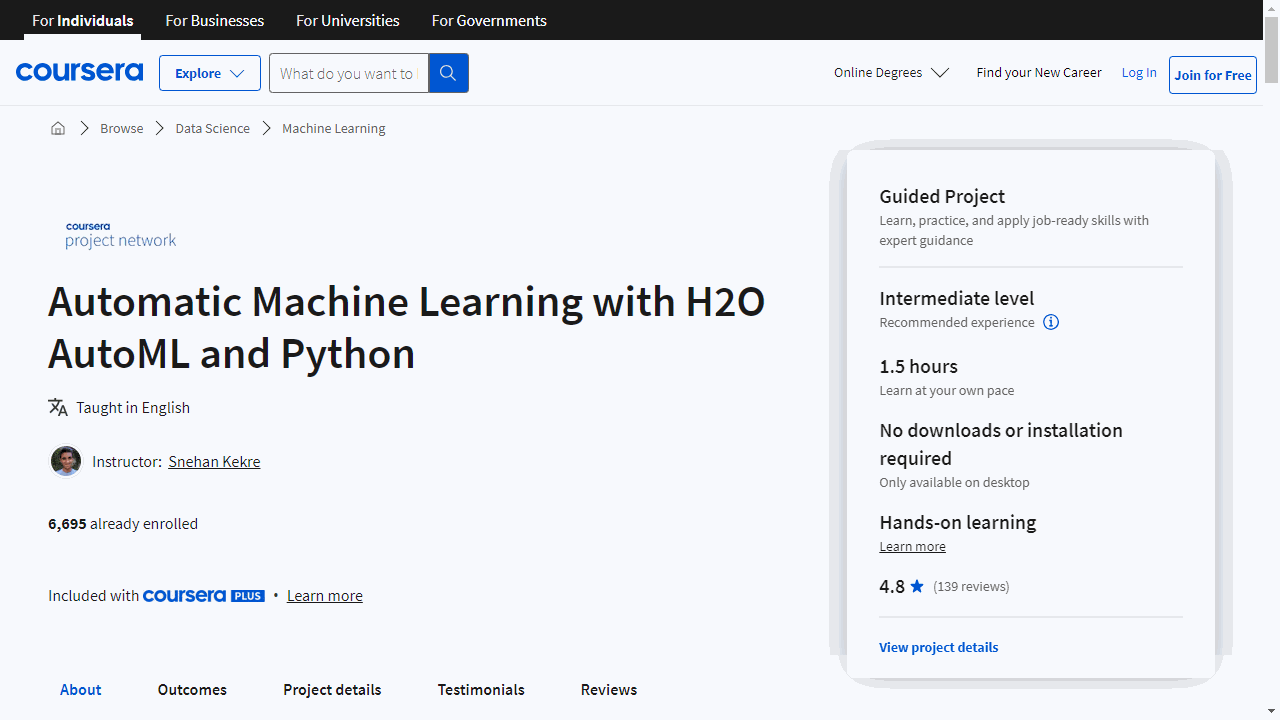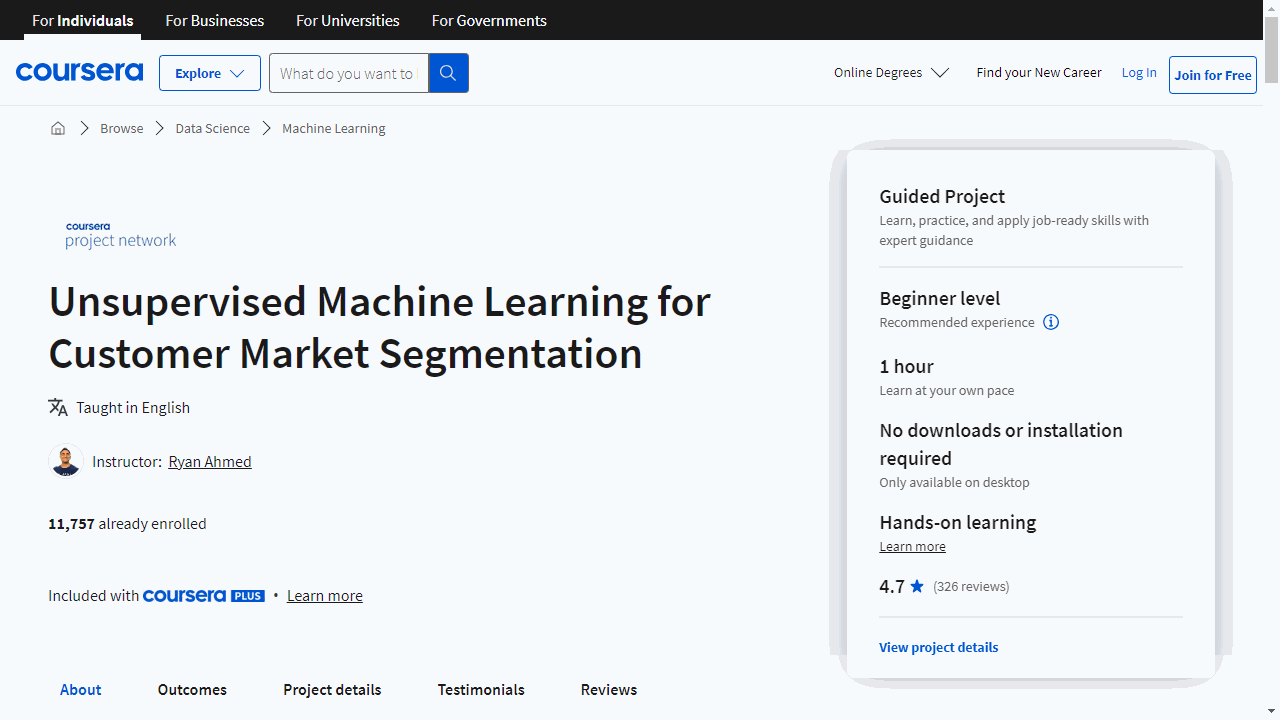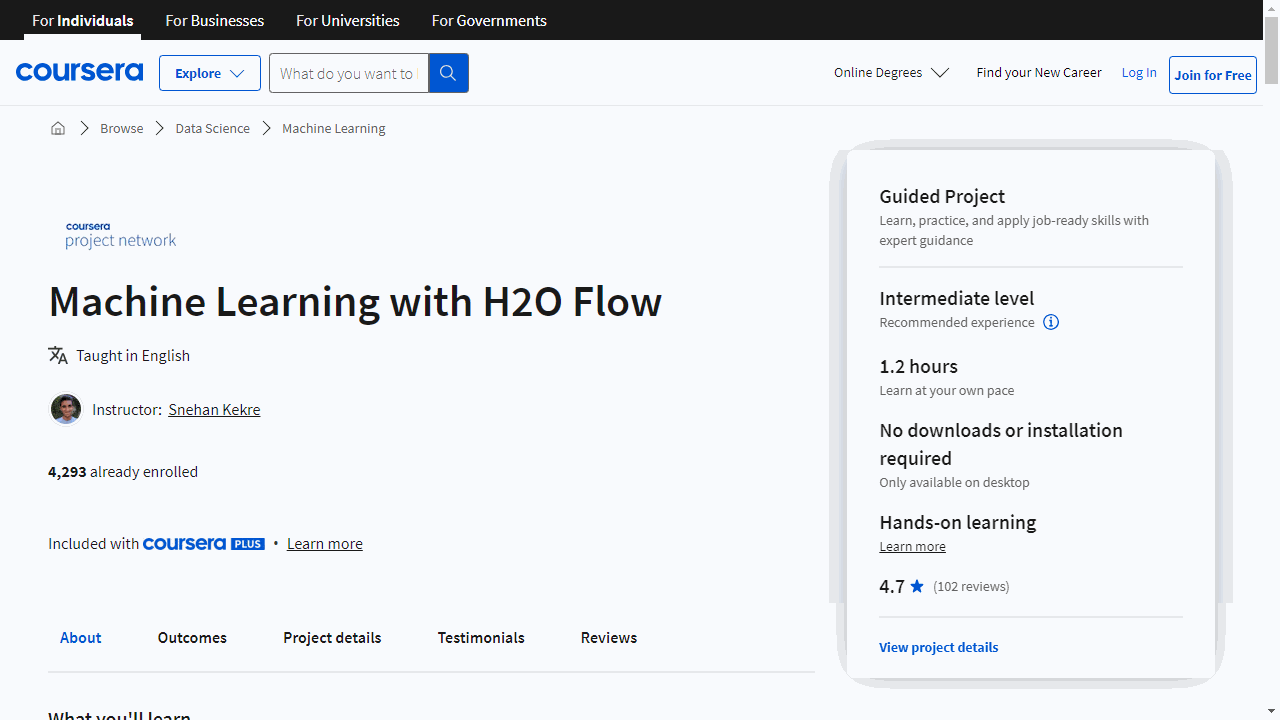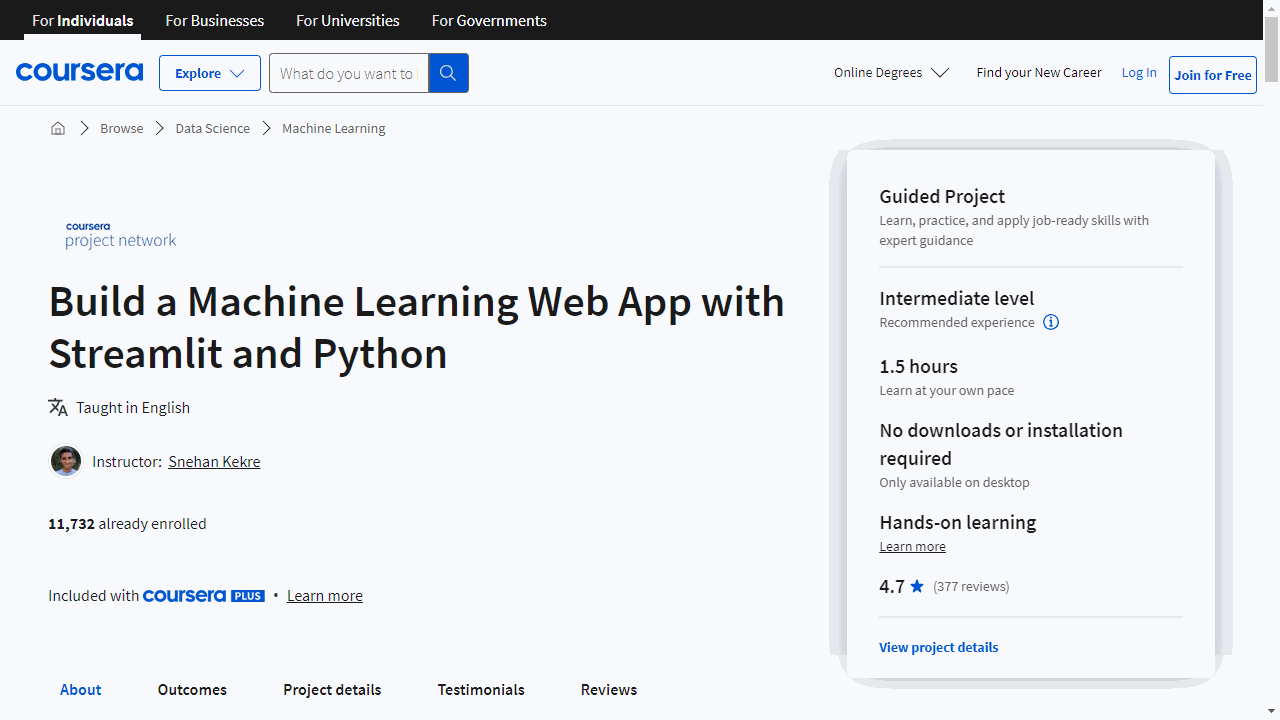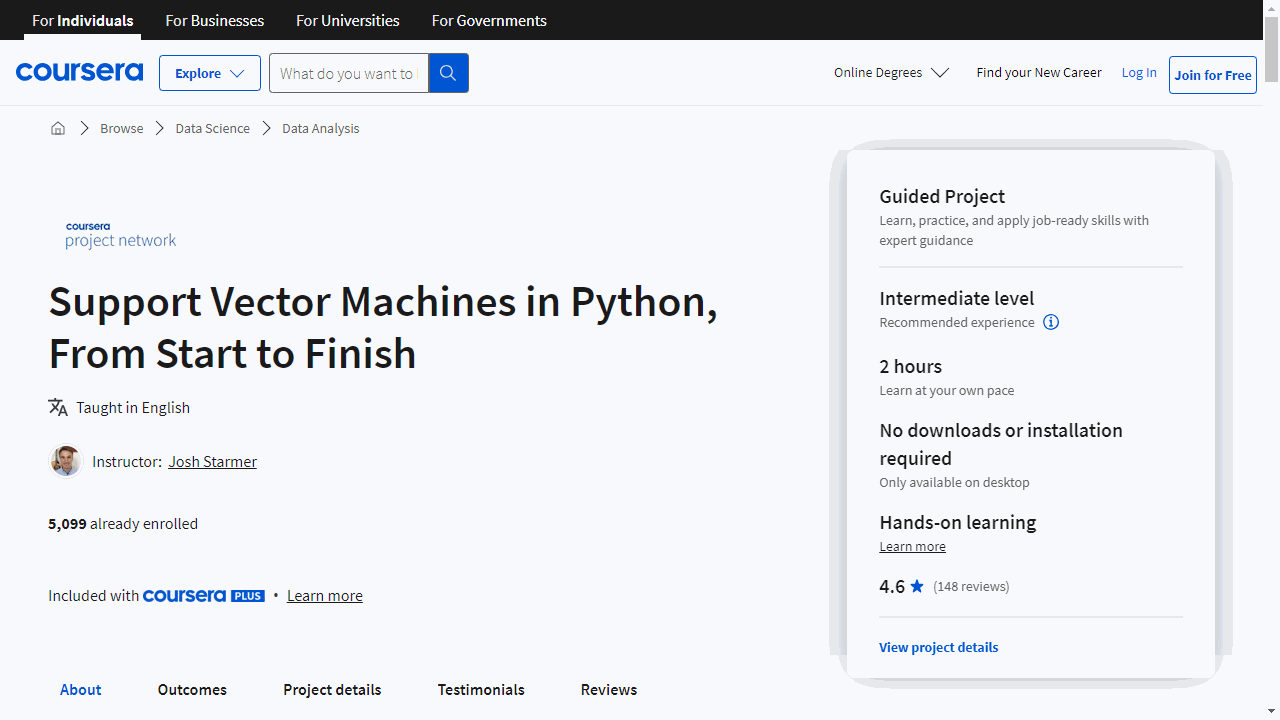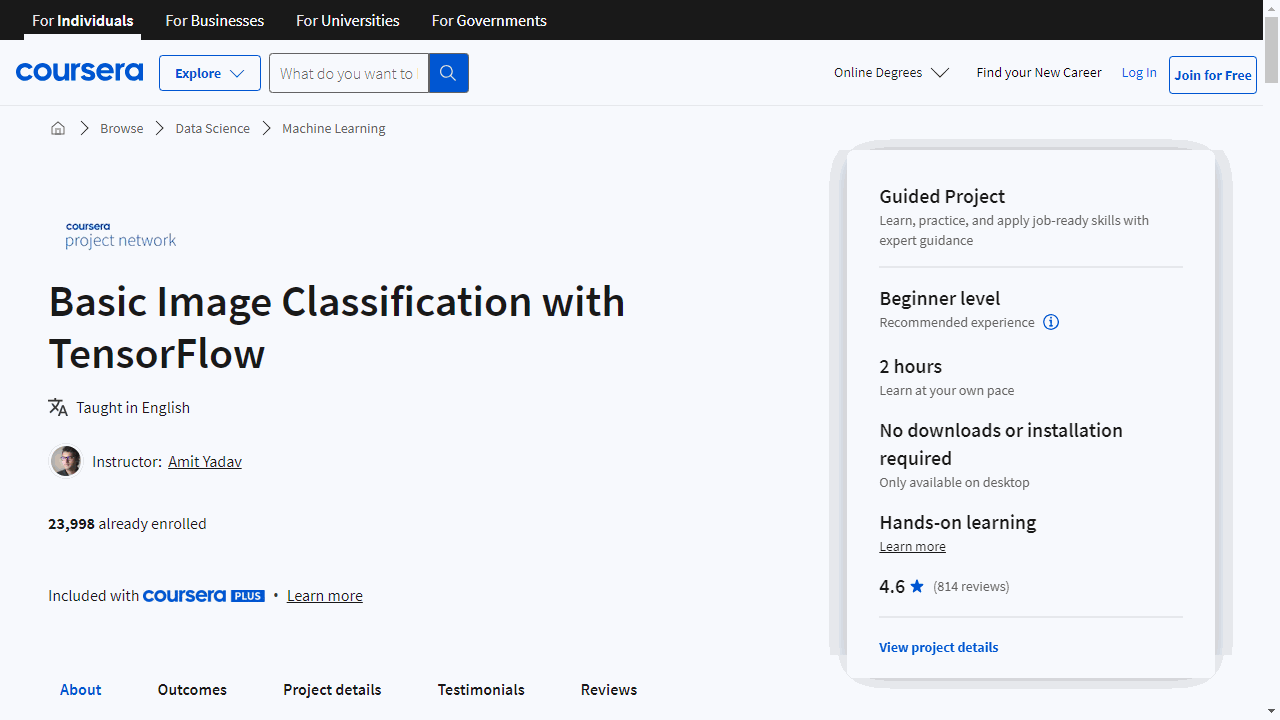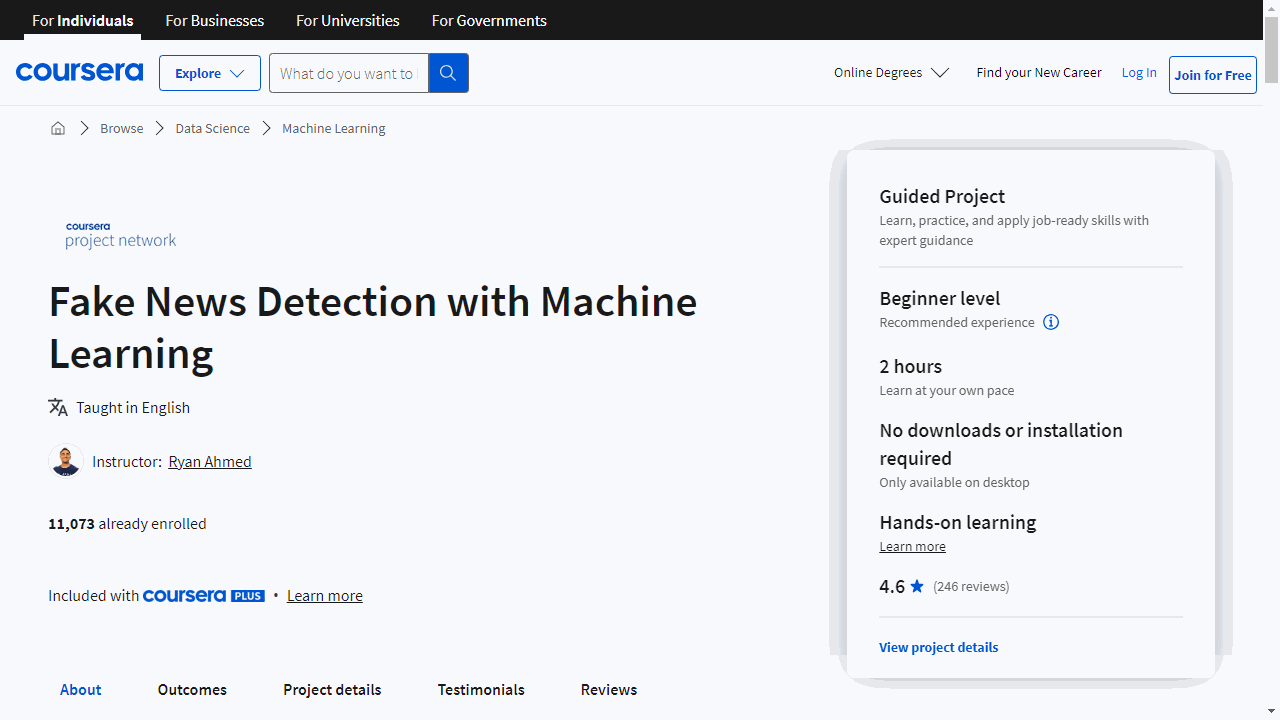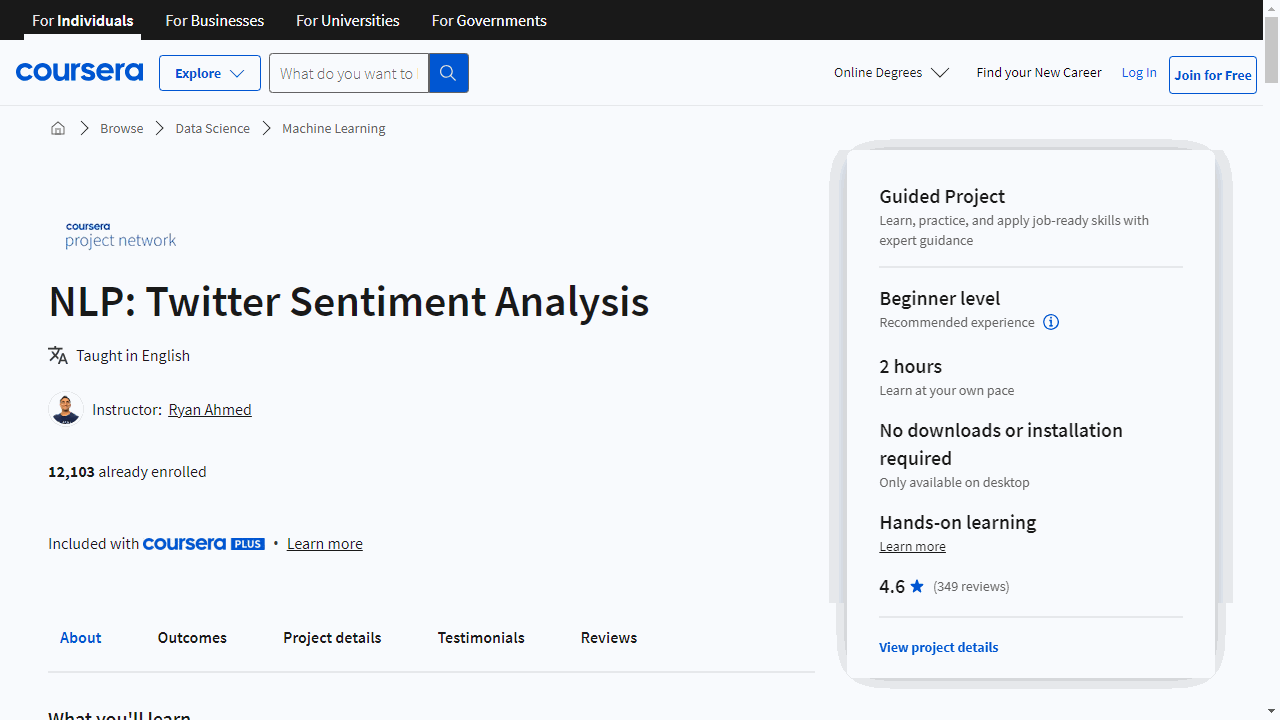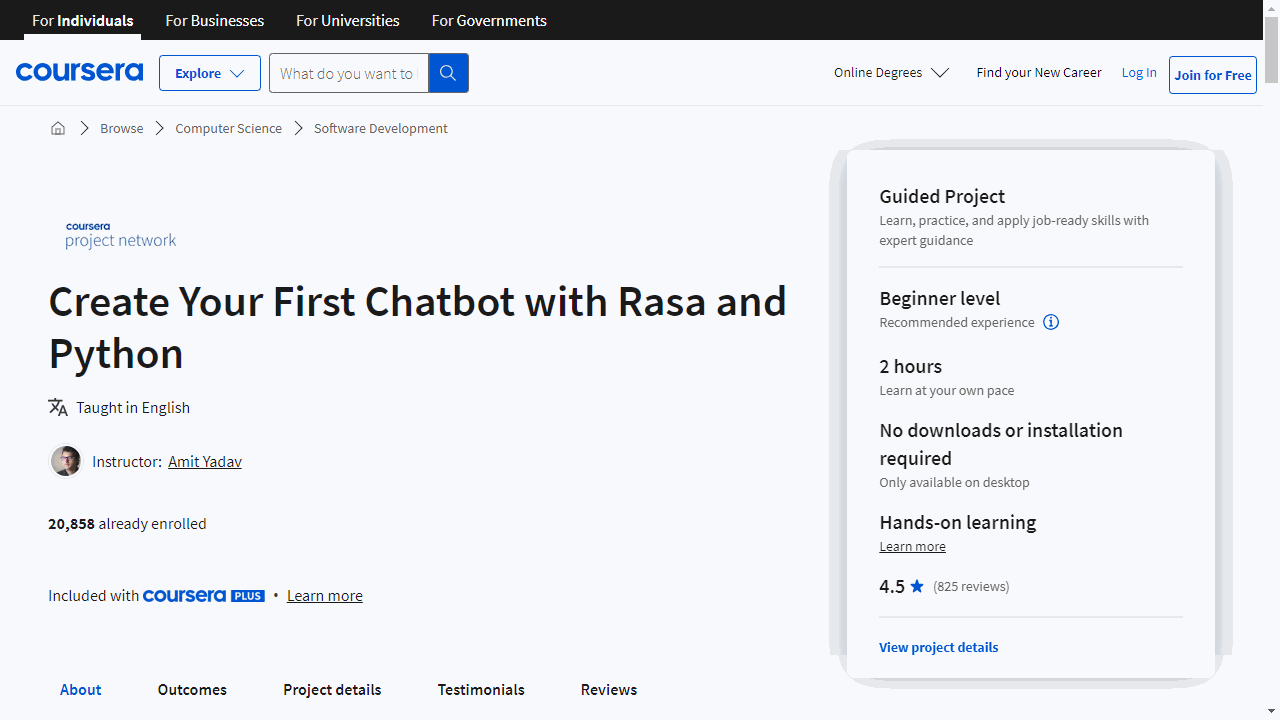Automatic Machine Learning with H2O AutoML and Python
You’ll learn how to use H2O’s AutoML, a powerful tool that automates the training and tuning of a wide array of models, freeing you up to concentrate on crucial steps like data pre-processing and feature engineering.
This project is ideal if you already have a handle on Python and basic machine learning concepts, and have used libraries like scikit-learn for model training.
While it won’t cover the nitty-gritty of how each model works, it will equip you with the skills to apply automatic machine learning to real business analytics problems, making your journey in data science more efficient and effective.
Unsupervised Machine Learning for Customer Market Segmentation
You’ll get hands-on experience training algorithms to sort customers into groups, making it easier for businesses to target their ads effectively.
By the end of it, you’ll understand how to use machine learning to identify customer patterns and behaviors, a skill that’s super valuable for any marketer looking to connect with their audience in a more personalized way.
Machine Learning with H2O Flow
You’ll get hands-on experience with H2O Flow, a user-friendly, web-based interface that lets you train and evaluate models effortlessly using AutoML.
This means you can focus on the cool parts of machine learning, like understanding your data and fine-tuning your approach, while the heavy lifting of model selection and training is done for you.
Ideal for those with a grasp of basic machine learning concepts, this project will sharpen your skills in data pre-processing, feature engineering, and business analytics.
Plus, it’s built on H2O, a top-notch, open-source platform that’s trusted by pros.
Build a Machine Learning Web App with Streamlit and Python
Here’s your chance to build a standout ML web app using Streamlit and Python, even if you’ve never touched web development before!
You’ll learn to load and play with data, create interactive visualizations, and set up a user-friendly dashboard in a snap—imagine doing all this with less than 100 lines of code.
You’ll get hands-on experience with algorithms like Logistic Regression, Support Vector Machines, and Random Forest Classifiers, and you’ll be able to tweak their settings without needing to write complex code, thanks to the power of scikit-learn.
This project is perfect if you’ve got some Python basics down and are familiar with data manipulation using pandas.
Support Vector Machines in Python, From Start to Finish
Dive into the world of Support Vector Machines!
You’ll learn to build a classifier using scikit-learn and the Radial Basis Function (RBF) Kernel, tackling real-world data to predict heart disease.
With everything you need available in a cloud desktop through Coursera’s Rhyme platform, you can jump straight into coding in your browser, without any setup hassles.
You’ll need to be comfy with Python and some machine learning concepts like Regularization and Cross Validation, but don’t worry, you can revisit the instructional videos as much as you need.
Basic Image Classification with TensorFlow
In just two hours, you’ll get hands-on experience with Keras and TensorFlow, two powerhouse tools in AI.
You’ll build and train a neural network model that can accurately recognize hand-written digits, a fundamental skill in image classification.
Not only will you grasp the essentials of neural networks, but you’ll also see your model come to life as it learns to predict with impressive accuracy.
Fake News Detection with Machine Learning
You’ll get hands-on experience training a cutting-edge Bidirectional Neural Network and LSTM to sift through a news corpus, identifying what’s real and what’s not.
This project is perfect for you if you want to empower media companies with the ability to automatically flag fake news, saving the hassle of manual review.
Machine Learning Pipelines with Azure ML Studio
You’ll work with real-world data, like the Adult Income Census, to predict income levels using a Two-Class Boosted Decision Tree classifier, and you’ll do it all through Coursera’s Rhyme platform, which means you get a pre-configured cloud desktop with all the tools you need, like Python and scikit-learn, right in your browser.
Plus, if you’re new to Azure ML, the course guides you on setting up your account with $200 in free credits.
This project is perfect if you’re eager to dive into machine learning by deploying models as web services and interacting with APIs to see your predictions come to life.
NLP: Twitter Sentiment Analysis
You’ll get to train a Naive Bayes classifier, a powerful algorithm, to gauge the mood behind thousands of tweets.
This skill is super handy for any business that wants to keep an eye on what customers are saying on social media without spending hours reading through posts.
You’ll learn to automate sentiment analysis, which means figuring out if people are happy or not with just a click.
Create Your First Chatbot with Rasa and Python
In just two hours, you’ll grasp the essentials of the powerful Rasa framework, which is a go-to for developers crafting AI-driven chatbots.
You’ll start from scratch, learning to build simple yet smart chatbots without needing any prior machine learning or chatbot experience—just a basic understanding of Python.
By the end, you’ll have the confidence to create your own AI chatbots, making this project a standout addition to your machine learning portfolio.
